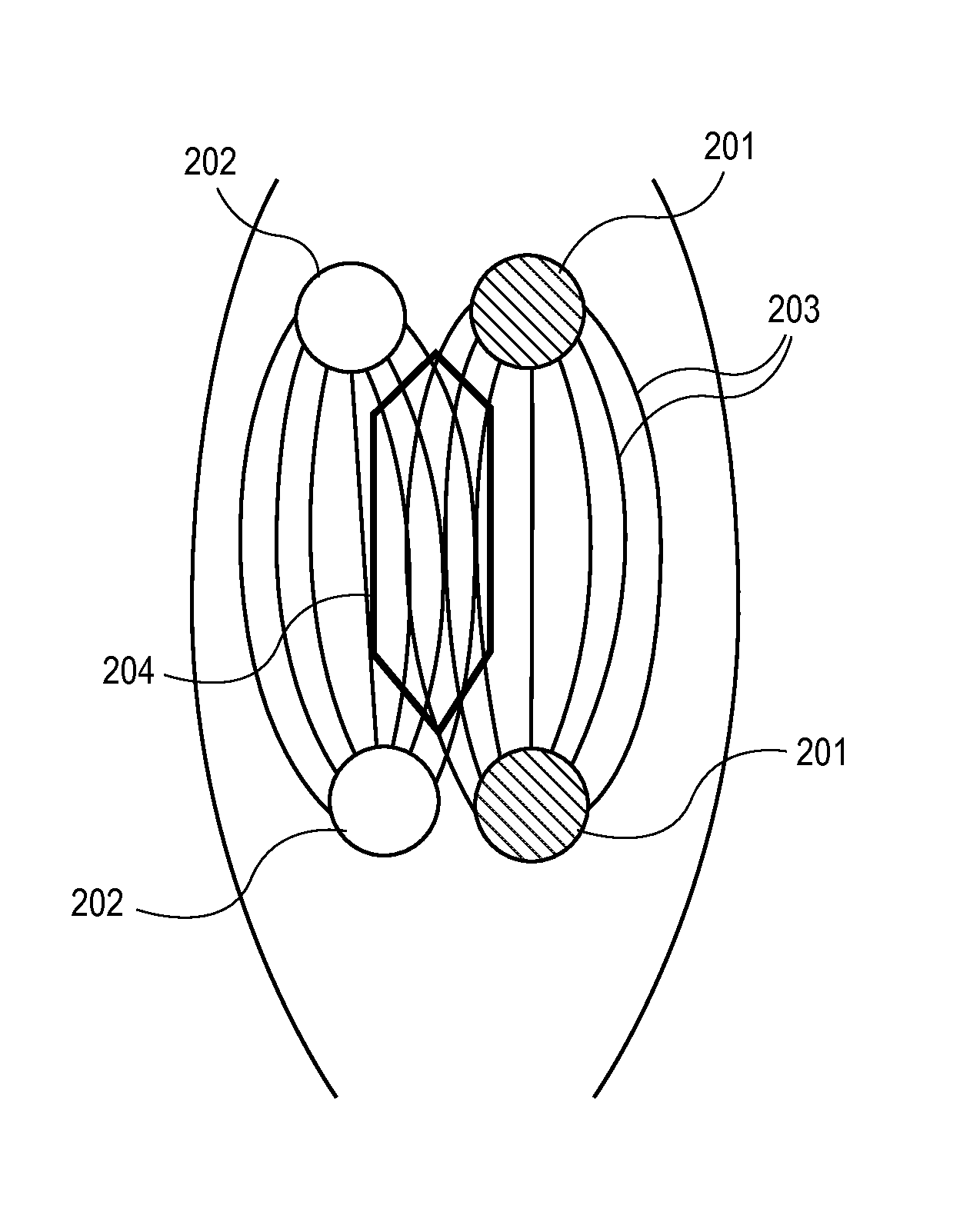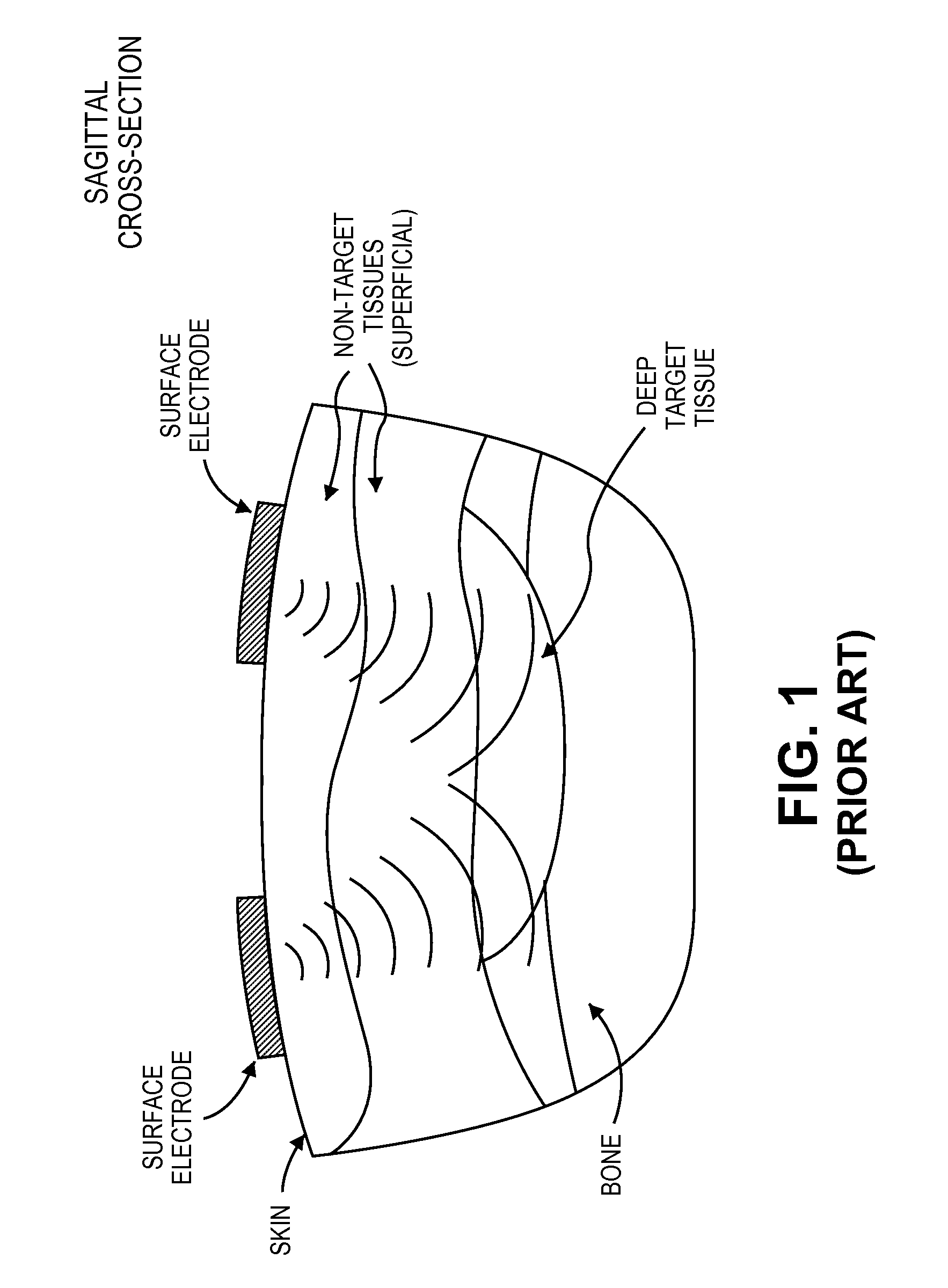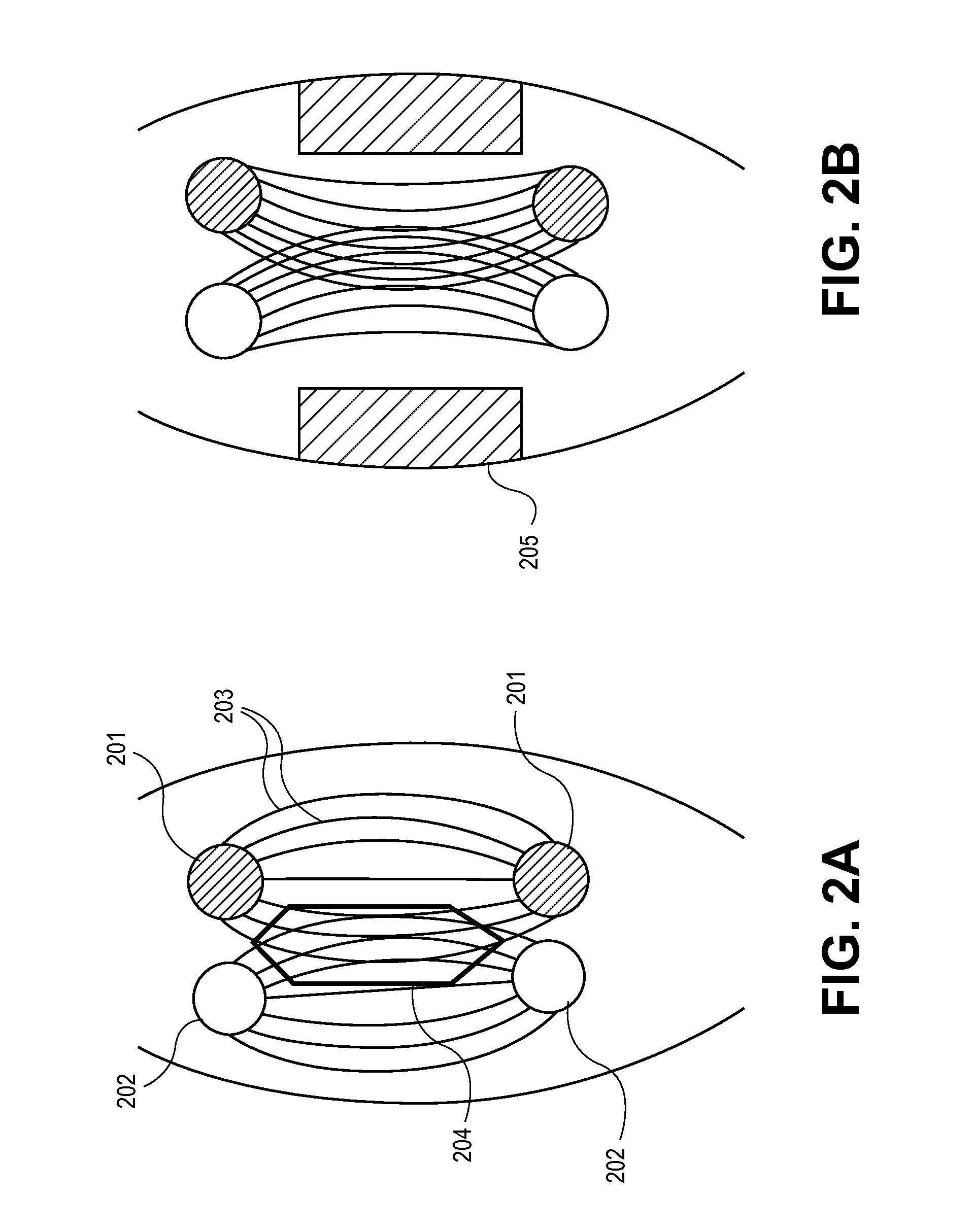Synergistic muscle activation device
a muscle activation and muscle technology, applied in the direction of internal electrodes, cooling therapy, therapy, etc., can solve the problems of not including mechanisms that are useful for reducing, existing technologies do not provide mechanisms for energy concentration in muscle tissues using multiple electrode pairs, etc., to achieve high energy levels, improve safety, and improve comfort
- Summary
- Abstract
- Description
- Claims
- Application Information
AI Technical Summary
Benefits of technology
Problems solved by technology
Method used
Image
Examples
Embodiment Construction
[0033]The disclosure herein provides systems and methods for neuromuscular electrical stimulation of muscle and / or nervous tissue using mechanisms to improve user comfort. Various aspects of the disclosure described herein may be applied to any of the particular applications set forth below or for any other types of electrical stimulation and sensing systems or methods. The invention may be applied as a standalone system or method, or as part of an integrated medical treatment system. It shall be understood that different aspects of the disclosure can be appreciated individually, collectively, or in combination with each other.
[0034]In some embodiments, the system includes at least components: surface electrodes that are used to couple electrical energy into and out of the body, a mechanism, device, or method to improve comfort during energy application, and a stimulation control unit that creates the stimulation energy pulses and delivers them to the surface electrodes. In some emb...
PUM
 Login to View More
Login to View More Abstract
Description
Claims
Application Information
 Login to View More
Login to View More - R&D
- Intellectual Property
- Life Sciences
- Materials
- Tech Scout
- Unparalleled Data Quality
- Higher Quality Content
- 60% Fewer Hallucinations
Browse by: Latest US Patents, China's latest patents, Technical Efficacy Thesaurus, Application Domain, Technology Topic, Popular Technical Reports.
© 2025 PatSnap. All rights reserved.Legal|Privacy policy|Modern Slavery Act Transparency Statement|Sitemap|About US| Contact US: help@patsnap.com



